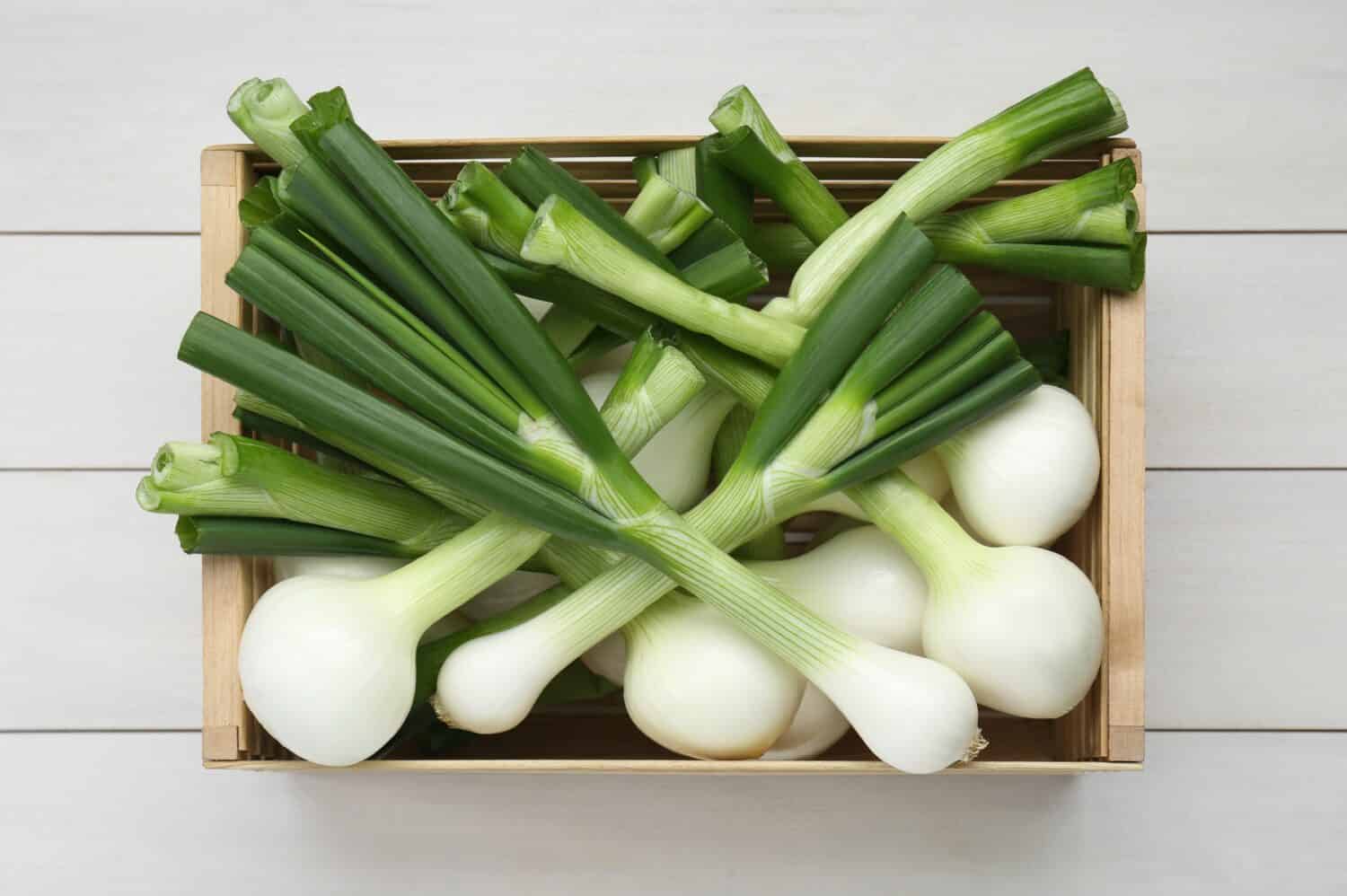There are all kinds of onions, green, red, yellow, sweet, and downright spicy. How to tell the differences between spring onion versus green onion can be tricky, but we’re here to help you out. Both vegetables have long, with green stalks, and a white bottom that forms the bulb of the plant. The major differences come down to when they are harvested, which in turn affects the flavor, as well as the size of the bulb. These traits also affect when to use spring onion versus green onion in certain recipes. The easiest way to compare the two is that spring onions are a more mature version of green onions. Both are young onions that have not fully matured in terms of bulb size or flavor.
Read on to learn more about the history of the onion plant, as well as how each type is grown. We’ll discuss more of the flavor and nutritional profile of both spring onions and green onions. Get some ideas of how to cook with each, popular recipes, and culinary alternatives. From this point on, at any grocery shop stop, you’ll be confident with the differences between spring onion vs. green onion. Happy reading!
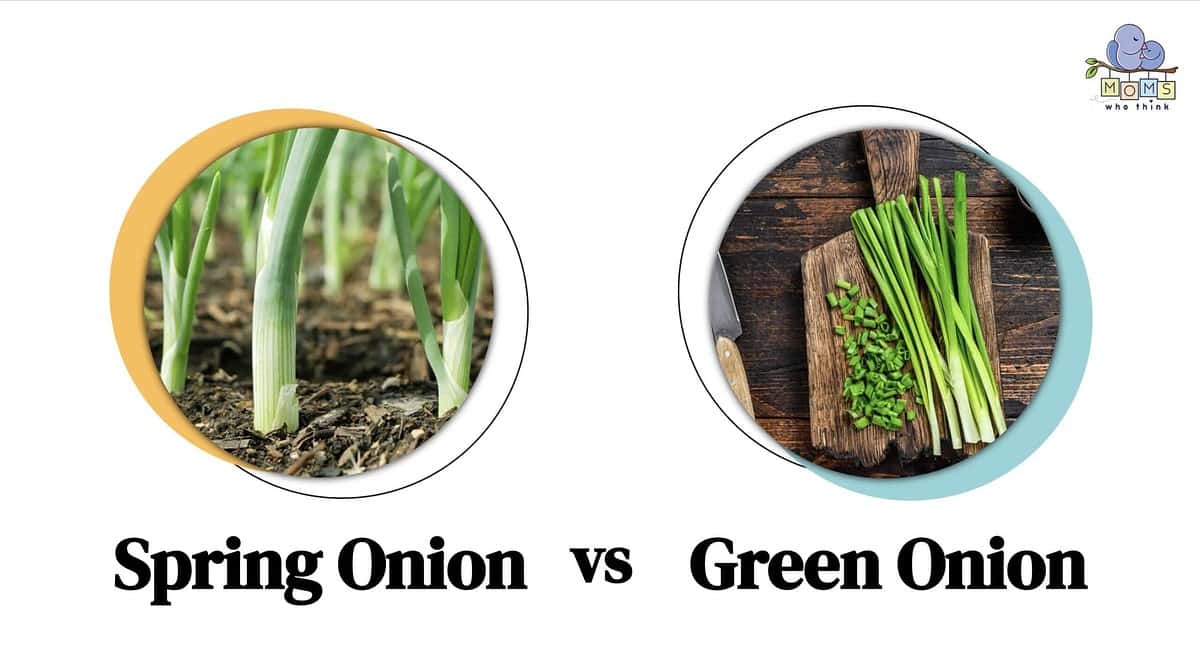
Spring Onion vs. Green Onion: What Is The Difference?
In easiest terms, the spring onion is a more mature version of the green onion. No matter the onion type, all onions go through different levels of maturity that impact their taste and subtle differences in appearance. Because spring onions are harvested later, they have an overall stronger yet more mature oniony taste and a larger bulb than green onions. Green onions, which can be used raw from the green stalk to the small bulb, are milder in the stalk, with a stronger taste in the straight white bulb (via Food & Wine Magazine).
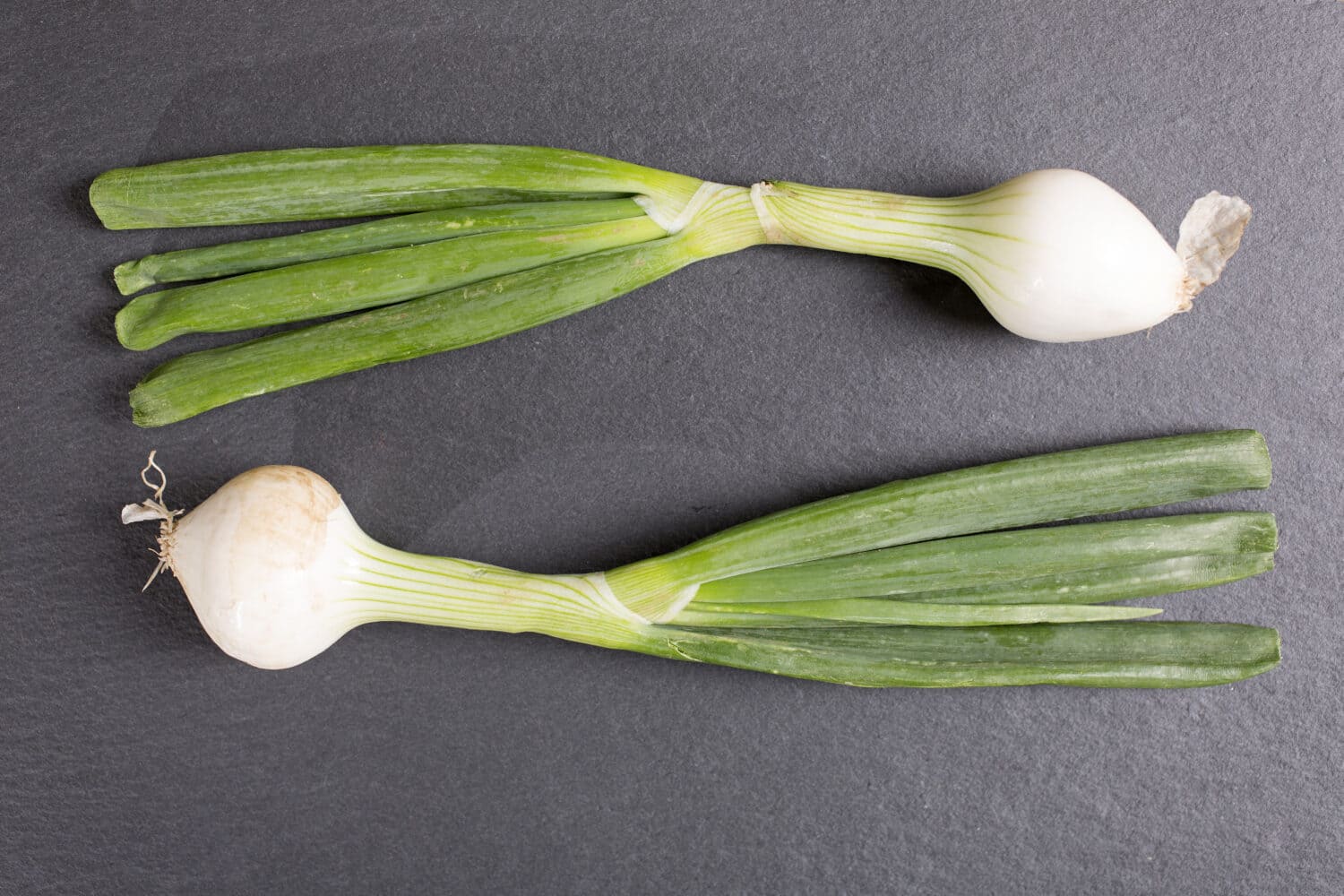
©ESB Basic/Shutterstock.com
What Is A Spring Onion?
Spring onions come from the Amaryllidaceae or amaryllis family, in the genus Allium. The most common types of this plant that grow into green onions, and spring onions include Allium cepa, and the hybrids of A. cepa, Allium chinenese, and the Welsh variety, Allium fistulosum. Onions are a biennial plant, meaning they'll flower and produce onion vegetables through two harvest cycles before needing to be replanted (via Brittanica).
What Are Green Onions?
The Allium fistulosum variety of onions specifically grows green onions that won't have a rounded bulb. Therefore it never technically checks off the rounded bulb characteristic of spring onions. However, since “green onion” and “spring onion” are just names for the maturity levels of these kinds of onions, other varieties of these plants can produce green onions when they are harvested early enough. The later harvest results in the spring onion qualifications (via Healthline). Green onions have a milder flavor than spring onions, although their green, hollow stalks, are less oniony than their straight, white bulbs.
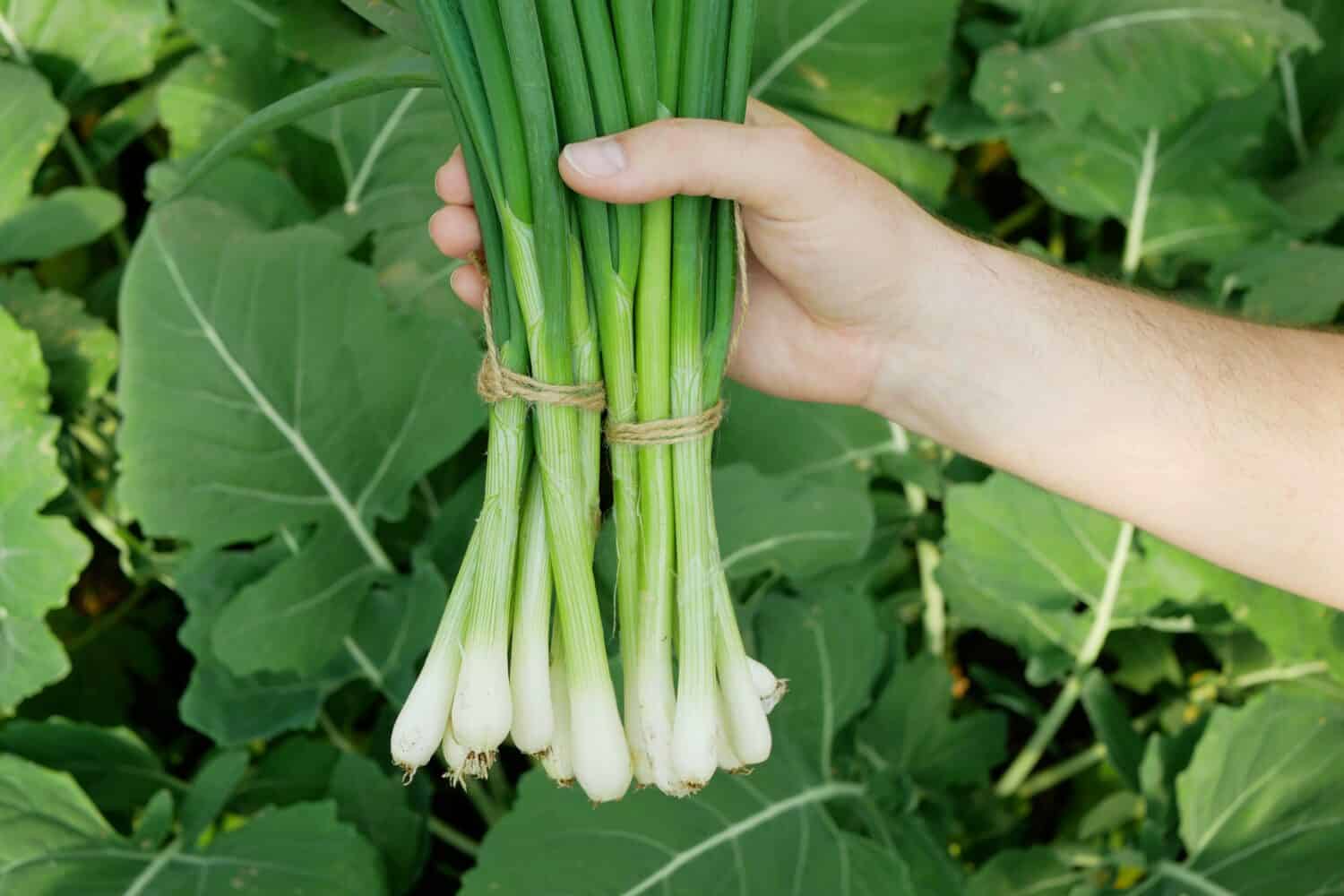
©Tomas Vynikal/Shutterstock.com
History And Origin Of These Plants
The History of Onion Plants
Onions as a vegetable have been around for thousands of years. There are roots in ancient cultures ranging from Europe, where the wild onion is native, throughout northwest Africa and parts of Asia. Evidence of early onion varieties can be traced to Bronze Age China, Ancient Egypt, and many other historical cultures. As domestication occurred, onions were likely predominant for their many adaptable traits. They have a long shelf life, grow easily in all kinds of environmental conditions, and are easy to cook. They can reduce thirst, be preserved, and add flavor to all kinds of dishes (via The National Onion Association). Let's learn a bit more about how onions are grown.
How Onions Are Grown
Spring onions, as the name suggests, are grown in the spring. You can either grow onions from onion sets, which will mature within 14 weeks or so, or from scratch with seeds. In colder areas, seeds can be the better option, as they'll withstand the weather over onion sets. The soil needs to be at least 50° Fahrenheit for proper germination, so starting them indoors and then transplanting them into your garden is really the way to go. Outdoor onion sets can be planted once temperatures are above 28° Fahrenheit. Onion sets should be planted 2-6 inches apart, and 1-2 inches deep. The closer spacing is better for green onions and spring onions, which will be harvested before they're fully mature.
To keep your plants healthy, use nitrogen fertilizer, and compost under the bulbs. You can put straw around the topsoil to retain moisture in the dirt and prevent the growth of weeds. Light mulching is encouraged but be sure not to cover them. The plants will naturally begin the push the soil away, and they can be watered weekly depending on how much natural rainfall is happening. Keep in mind that these vegetables need less time to mature than larger onion varieties (via Farmer's Almanac).
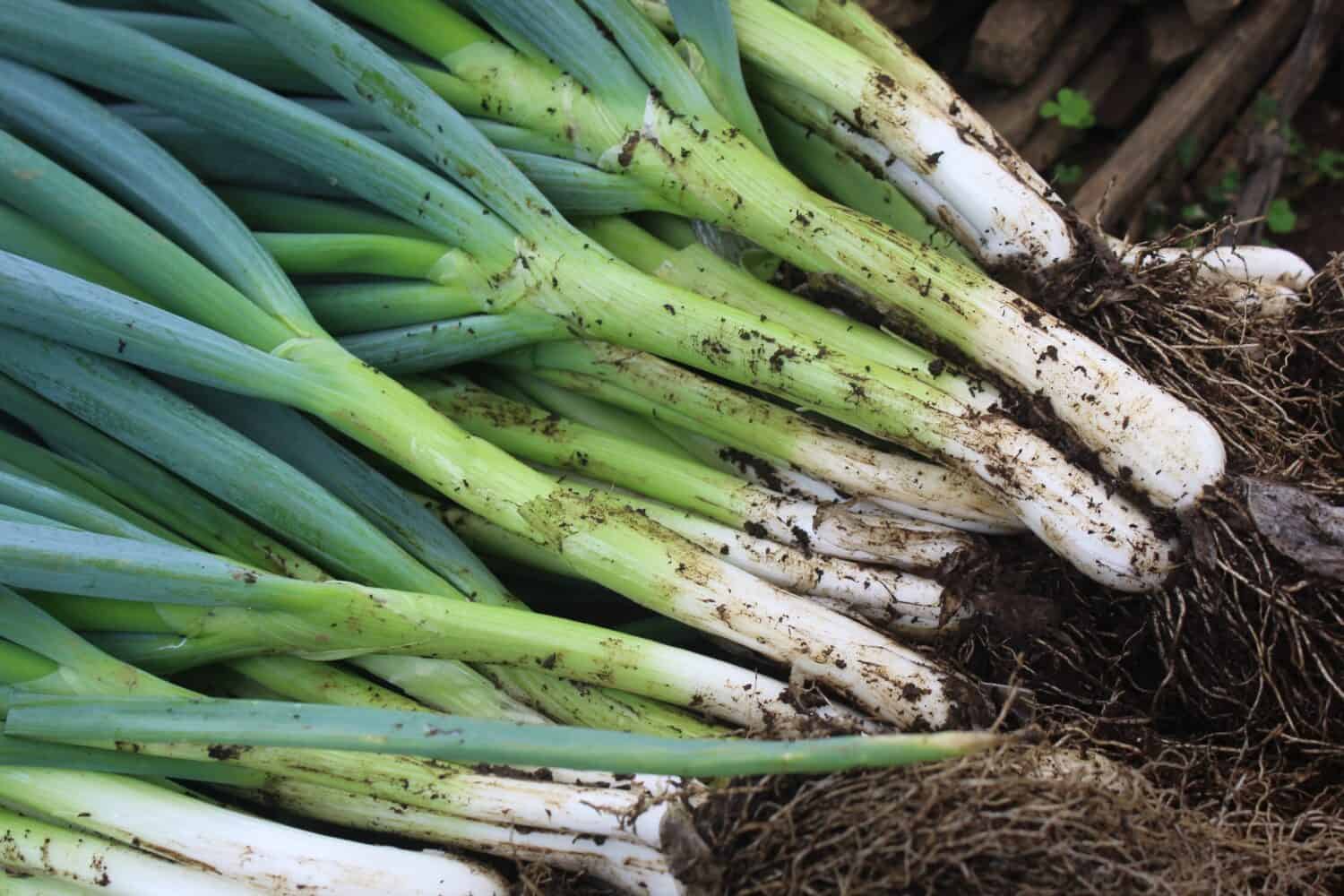
©Dian Zuraida/Shutterstock.com
Popular Recipes For Spring Onions And Green Onions
Here's where the taste differences between spring onion versus green onion can impact how they are used. Because spring onions are more mature, with a stronger flavor, they can be great pickled, or chopped up raw. Green onions are slightly milder, but can also be used raw to add a bit of a kick to salads, as a side, or as a garnish for both hot and cold dishes. People use both spring and green onions in baking, as a dressing or a marinade, in stir-fries, and as a flavoring in soups, stews, and all kinds of broths. Check out some of these recipes:
Spring Onion Recipes, via BBC Good Food
- Teriyaki tofu with charred spring onions
- Sea bass with sizzled ginger, chilli & spring onions
- Tuna, spring onion & sweetcorn fritters
- Gnocchi with courgette, mascarpone & spring onions
- Cheese, oat & spring onion soda bread
Green Onion Recipes
Nutritional Value Comparison of Spring Onion vs. Green Onion
As you can see from the handy chart below, both spring onions and green onions are quite healthy for you. In terms of protein, green onions have more, which has to do with their stage of growth. Green onions are also slightly higher in iron than spring onions. According to Web M.D., green onions can be very high in fiber and may be able to help fight disease, prevent infections, and reduce inflammation. When these ingredients are consumed as part of a healthy, balanced diet, they will have positive effects. And, as we've seen when cooked properly, they can be such a great ingredient!
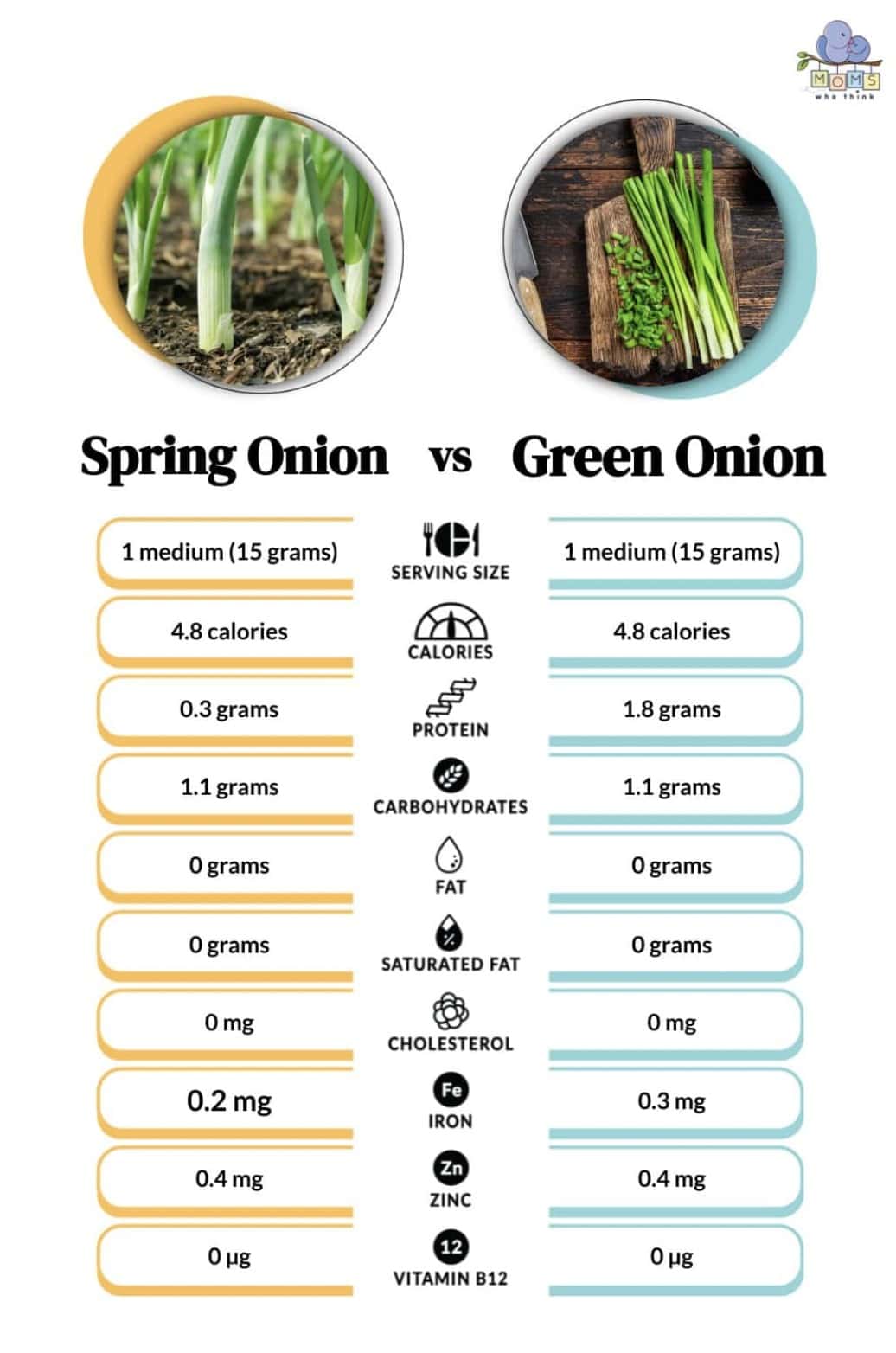
Spring Onion vs. Green Onion: Are They The Same Thing?
The short answer is, yes. The longer answer is no. Spring onions and green onions can come from the same varieties of onions. However, they differ in maturity level, taste, and appearance. While they are similar overall, knowing these differences can contribute to which one is a better choice for certain dishes. What recipe will you try, now that you know the major differences?
Possible Alternatives To Spring Onion And/Or Green Onion
There are some great alternatives including scallions, a slightly younger version of the green onion, and wild onions. Spring and green onions are related to species like chives, shallots, leeks, and garlic. This relation makes all of these possible options for similar textures or flavors (via Brittanica). Be sure to check how these options might impact the dish you're making. Because a leek does not have the same taste as a green onion if you want a direct substitute.
The image featured at the top of this post is ©New Africa/Shutterstock.com.
